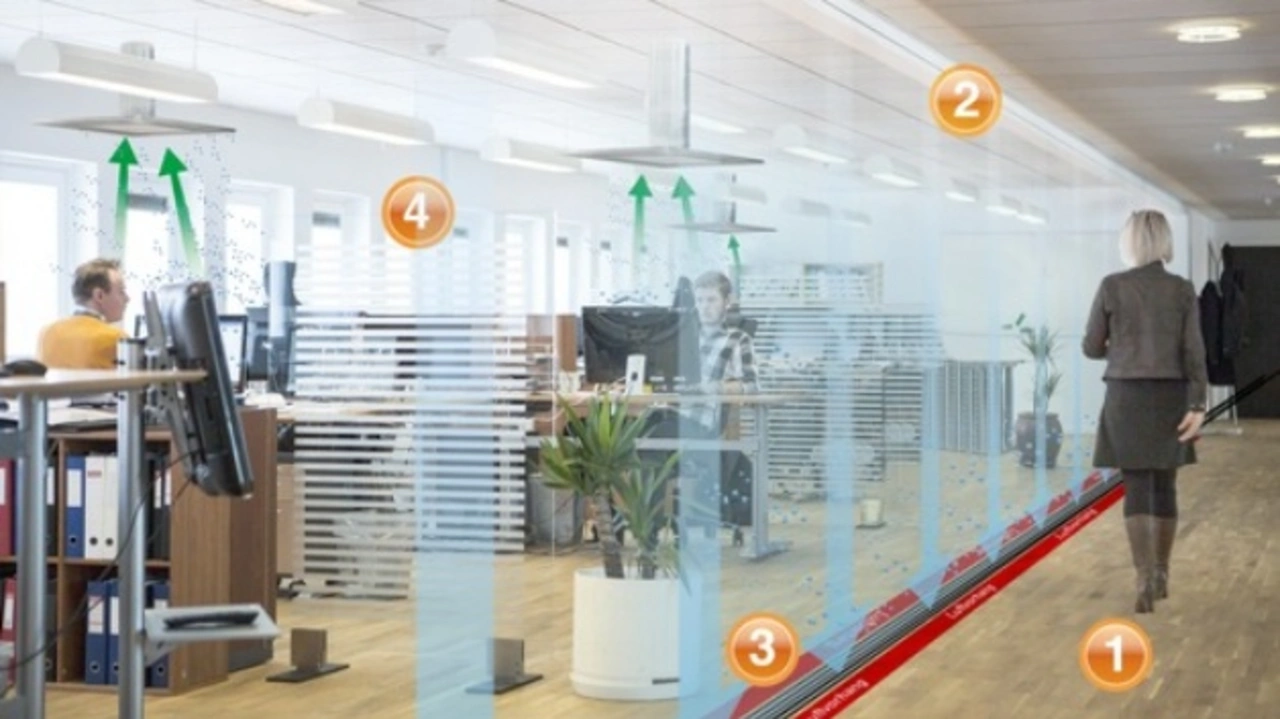99 % less aerosol particles
Systematic airflow protects against infection
Personal communication in closed rooms without mask and minimum distance? In times of the Corona pandemic hardly imaginable. But a new ventilation system is now supposed to provide more normality in dealing with each other again.
The protective system, which was developed in cooperation with international scientists and experts, combines in a hitherto unique way of combining targeted air guidance and coordinated air exchange rates with air-technical room separations and removes 99 % of the aerosol particles from the air we breathe, which are the main cause of infection with SARS Cov-2 viruses.
In closed rooms, persons are separated from each other by ventilation barriers in such a way that they can communicate even without a mouth-nose mask and at a short distance without being infected via the emitted respiratory aerosols.
At the same time, the airborne particles emitted by humans and potentially contaminated with SARS-COV-2 viruses are fed into a suitable filter system by means of targeted airflow and thus removed from the air we breathe. The gradual depletion of aerosols in indoor air considerably reduces the risk of infection. The filtered exhaust air is returned to the interior and used to maintain the air barriers.

And this is how the system works (see picture):
Areas of use are separated from passageways (1) by an air curtain (2). An optical marking (3) guides people through the room at the required safety distance. Within the areas of use, the extraction unit (4) collects aerosol particles up to 20 μm directly at the source and directs them to a virus filter system. In addition, the air curtain lifts larger aerosol particles ( > 20 μm) above the breathing level, where they are extracted by the exhaust air system (4) and directed to a virus filter. The process of extraction is enhanced by the laminar air flow of the curtain from below.
The protection system is standardised and can be used in any type of interior space where several people are present simultaneously for long periods of time - at the workplace in production, in open-plan offices, in conference centres and accommodation facilities and, last but not least, in classrooms and lecture halls of schools and universities.





